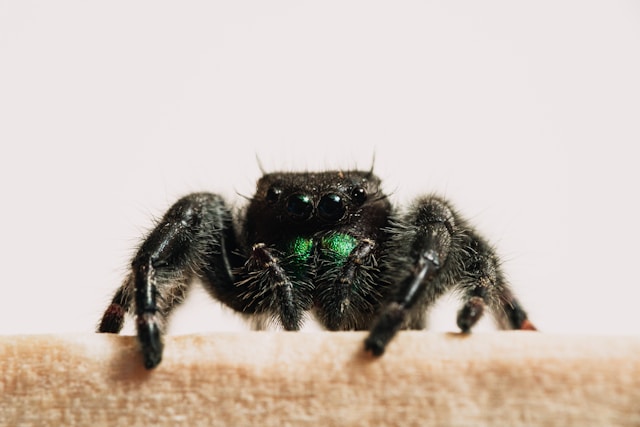Jumping Spiders
Your Spider problems, Gone For Good, Guaranteed.
Request a Callback
We’ll give you a call to discuss the best pest application for you:

DESCRIPTION:
___
The Jumping Spider family (Salticidae) contains more than 500 described genera and about 5,000 described species, making it the largest family of spiders. Jumping spiders have good vision and use it for hunting and navigating. They are capable of jumping from place to place, secured by a silk tether. Adults rarely grow larger than one inch. Some common house jumping spiders appear black with white markings along the abdomen.
BIOLOGY:
___
Jumping spiders are known for their swift reflexes and leaping abilities. These spiders are capable of leaping as high as 25 times their own size and as such, are extremely capable predators. Jumping spiders also possess impressive eyesight. When a jumping spider is moving from place to place, and especially just before it jumps, it tethers a filament of silk to whatever it is standing on. Should it fall for one reason or another, it climbs back up the silk tether.

HABITS:
___
Jumping spiders are known for their curiosity. If approached by a human hand, instead of scuttling away to safety as most spiders do, the jumping spider will usually leap and turn to face the hand.
Jumping spiders are a scopula-bearing spider, which means that they have a very interesting tarsal section. At the end of each leg they have hundreds of tiny hairs, which each then split into hundreds more tiny hairs, each tipped with an “end foot”. These thousands of tiny feet allow them to climb up and across virtually any terrain. They can even climb up glass by gripping onto the tiny imperfections, usually an impossible task for any spider.
Jumping spiders are active hunters, which means that they do not rely on a web to catch their prey. Instead, these spiders stalk their prey. They use their superior eyesight to distinguish and track their intended meals, often for several inches. Then, they pounce, giving the insect little to no time to react before succumbing to the spider’s venom.

